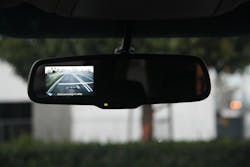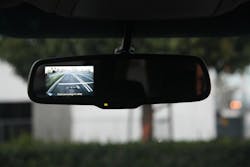AAA said it evaluated 17 vehicles across 11 manufacturers with factory-installed and aftermarket rear-view camera systems on a variety of vehicle body styles to measure the reduction in blind-zone areas as a direct result of using a rear-view camera system.
The group added that it conducted that research in conjunction with the Automobile Club of Southern California's Automotive Research Center.
It’s worthy to note, though, that such rear-camera technology is going to become standard on light vehicles as a mandate issued by the National Highway Traffic Safety Administration (NHTSA) will require such devices be installed on all passenger vehicles beginning in 2016, with full compliance by May 2018.Yet it’s also imaging technology that’s viewed as very beneficial in the commercial truck arena, too, as this article penned by Paul Menig, CEO of Tech-I-M LLC, for Fleet Owner’s IdeaXchange site explains.
Still, John Nielsen (at right), AAA's managing director of automotive engineering, stressed in a statement that rear-view cameras cannot replace the alertness of the driver when it comes to safe vehicle operation.
"The rear-view camera is a great supplement for drivers [but] the camera doesn’t replace the need to check around your vehicle for obstacles before getting in to back up,” he stressed. “They do dramatically improve rear visibility. These systems are especially helpful for viewing the first 10 feet behind the vehicle, which are the most hazardous in terms of back-over risk for young children."
When used appropriately, Nieslen said, the rear-view camera offers a bright, clear view directly behind the vehicle where small children are most difficult to see.
He adds a few other pointers where rear imaging technology is concerned:
- Although these systems dramatically improve rear-view visibility, they do not show 100% of the space behind the vehicle.
- AAA recommends drivers always walk behind their vehicle to visually confirm that there are no obstacles, and use the rear-view camera to confirm that nothing has entered the area immediately behind the vehicle since the driver's walk-through inspection.
- Rain, snow or slush can cloud the rear-view camera lens, delivering blurry imagery. Motorists will need to resort to manual methods of confirming that the rear blind zone is clear during inclement weather.
- Wiping the camera during the pre-drive inspection is a good habit that ensures the camera is ready to capture a clear image.
Good tips to keep in mind as rear camera technology begins to become standard equipment on a wide range of vehicles.


